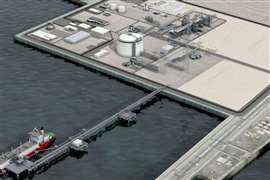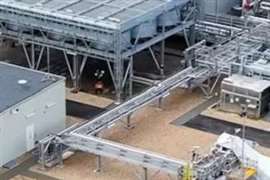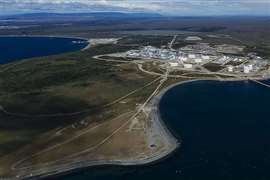Associated Gas Aids U.S. Gas Growth
06 November 2019

A growing share of U.S. natural gas production is associated-dissolved natural gas (natural gas produced from oil wells), which is the result of increased crude oil production from low permeability, tight rock formations — Permian, Bakken, Eagle Ford, Niobrara and Anadarko — according to recent information from the U.S. Energy Administration.
In 2018, associated-dissolved natural gas production in these five major crude oil-producing regions was 12.0 billion cubic feet per day (bcfd), or about 37% of total natural gas production in these regions and about 12% of total U.S. natural gas production.
Associated-dissolved natural gas, also referred to as associated gas, is natural gas produced by oil wells. By contrast, non-associated gas is natural gas produced by natural gas wells. Some states define an oil well versus a natural gas well differently based on different gas-oil ratios (GOR). The EIA uses a gas-oil ratio of 6000 cu. ft. of natural gas to one barrel of oil (cfb) for each year’s total well production to determine whether a well is an oil well or natural gas well. If the GOR for a year of production is equal to or less than 6000 cfb, then the well is defined as an oil well, and any natural gas produced from this well is called associated gas. In addition, the various state pressure bases used to measure natural gas volumes have been converted to the federal pressure base of 14.73 psi absolute and 60º F.
Associated gas contains natural gas plant liquids (NGPLs) such as ethane, propane, normal butane, isobutane, and natural gasoline. Associated gas is also characterized as wet gas because it must be treated at natural gas processing plants to remove impurities and liquids before it can be marketed as natural gas. The increase in associated gas has led to record volumes of U.S. NGPL production. NGPLs are used as feedstocks to produce plastics, fibers and other products.
 The Permian region, which spans parts of western Texas and eastern New Mexico, has the most associated gas production of the five crude oil-producing regions. The Permian region produced 5.8 bcfd of associated gas in 2018, accounting for 51% of the Permian’s natural gas production total and surpassing non-associated gas production in the region for the first time. Record-high crude oil production from the Permian brings with it large volumes of associated gas. Greater natural gas production in the Permian region has led to additional natural gas takeaway pipeline capacity to move the natural gas out of the area to the market.
The Permian region, which spans parts of western Texas and eastern New Mexico, has the most associated gas production of the five crude oil-producing regions. The Permian region produced 5.8 bcfd of associated gas in 2018, accounting for 51% of the Permian’s natural gas production total and surpassing non-associated gas production in the region for the first time. Record-high crude oil production from the Permian brings with it large volumes of associated gas. Greater natural gas production in the Permian region has led to additional natural gas takeaway pipeline capacity to move the natural gas out of the area to the market.
The Bakken formation, which is mostly in North Dakota, has the largest share of associated gas among the five major oil-producing regions. Associated gas accounts for 92% of the total natural gas production in the region. In 2018, the Bakken produced 2.2 bcfd of associated gas, surpassing the Eagle Ford, which produced 2.1 bcfd of associated gas. The Niobrara and Anadarko Basins both had increases in associated gas production in 2018, and their combined associated gas volume was 1.9 bcfd.
Associated natural gas production in the United States increased from 4.3 bcfd in 2006 to 15.0 bcfd in 2018. During this period, the associated gas share grew from about 8% to 16% of total natural gas production (measured as gross withdrawals). Associated gas in the U.S. crude oil regions increased from 1.1 bcfd to 12.0 bcfd between 2006 and 2018. The share of associated gas in these regions grew from 8% to 37% of natural gas production in the major crude oil regions.





